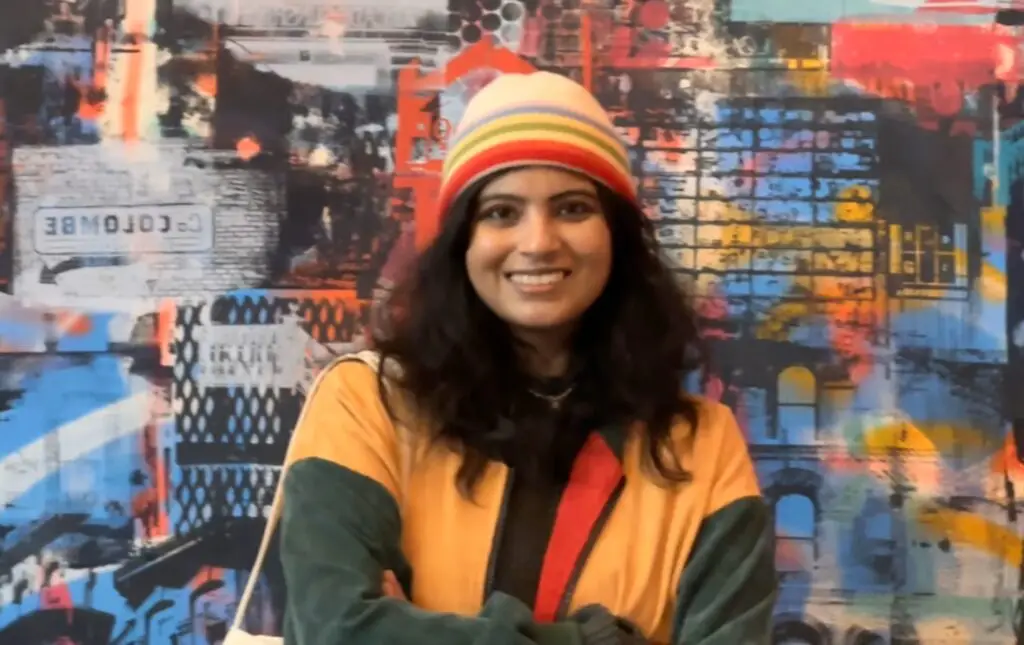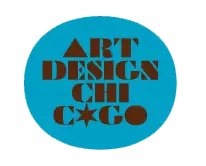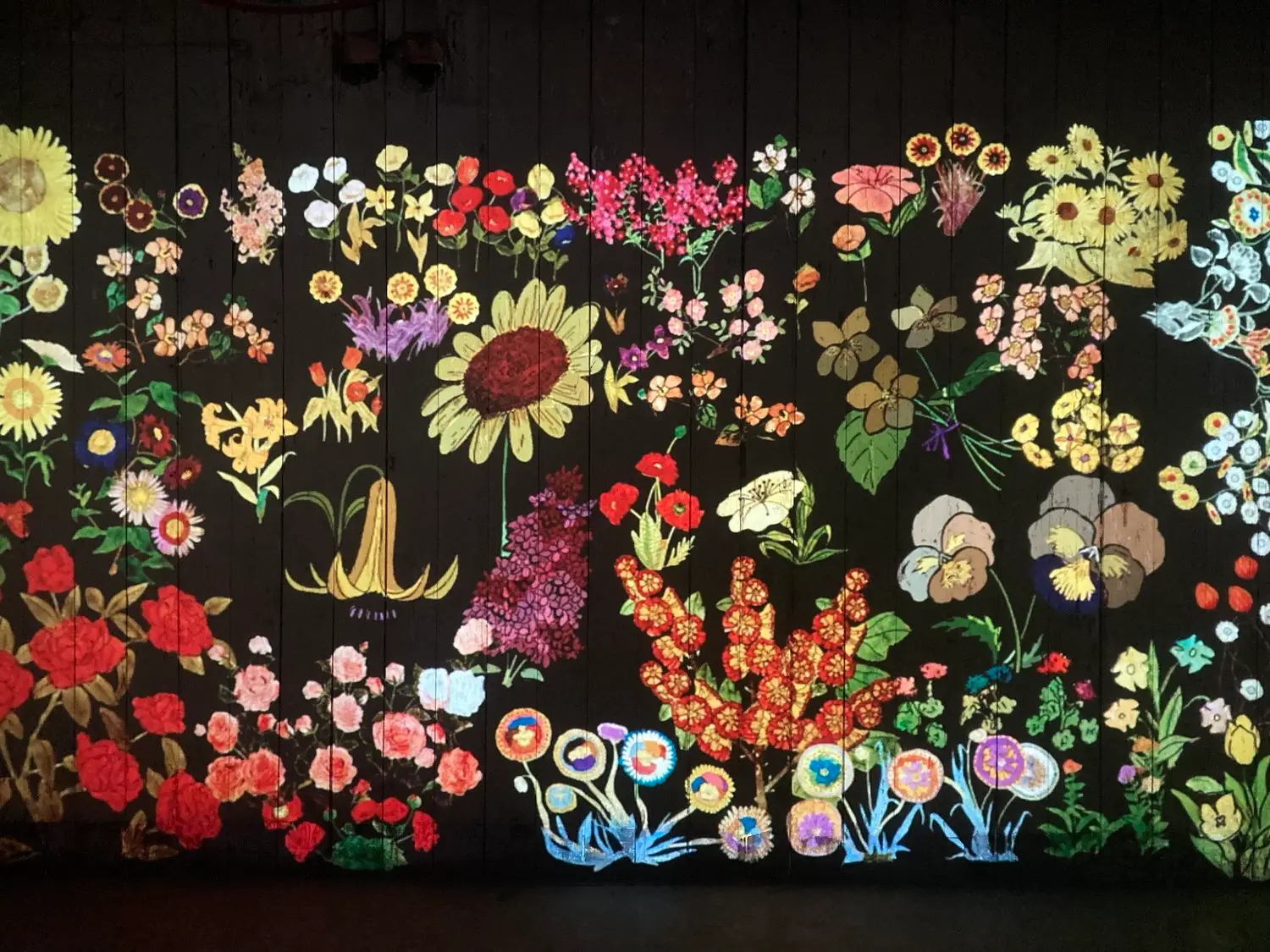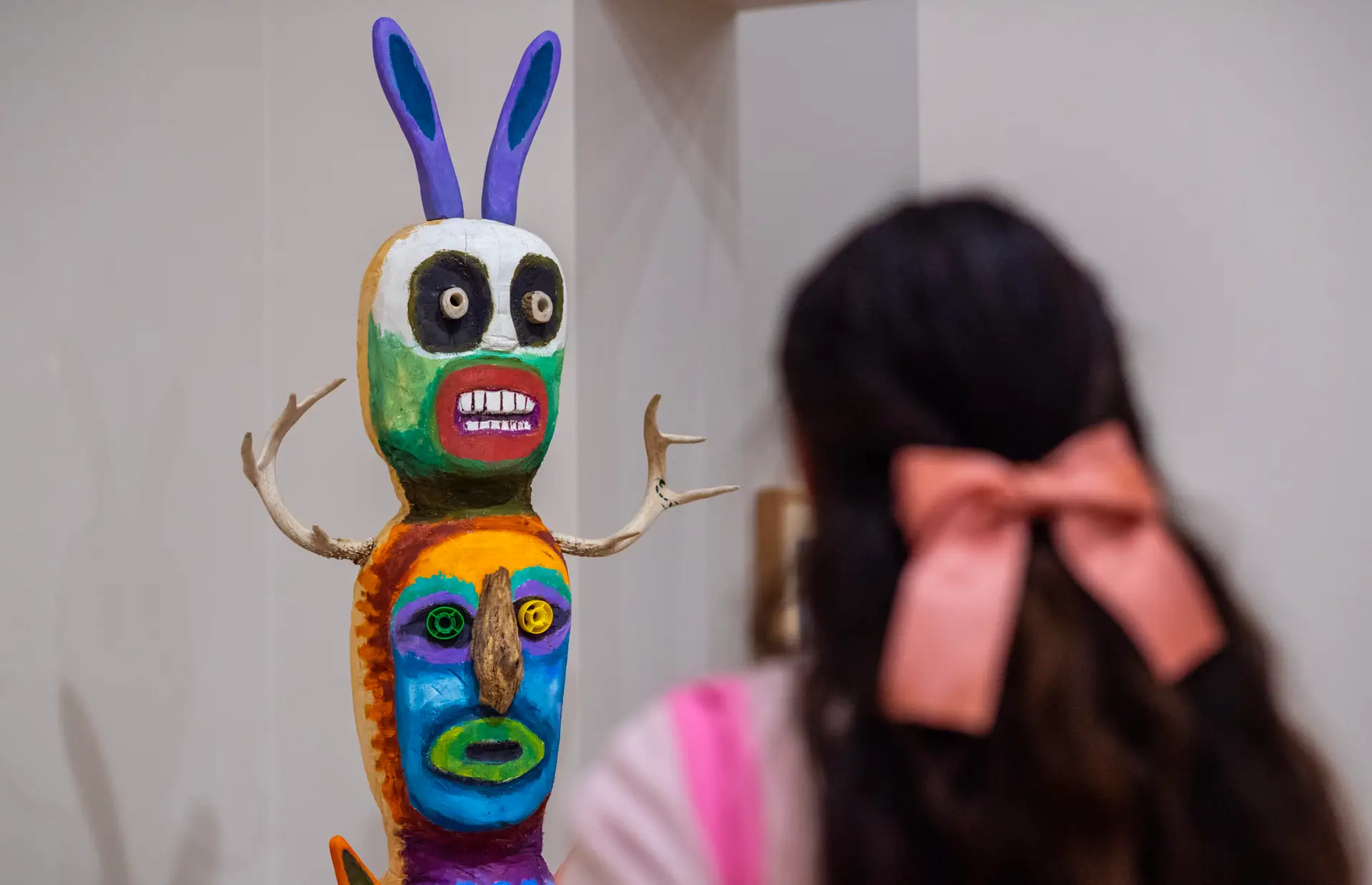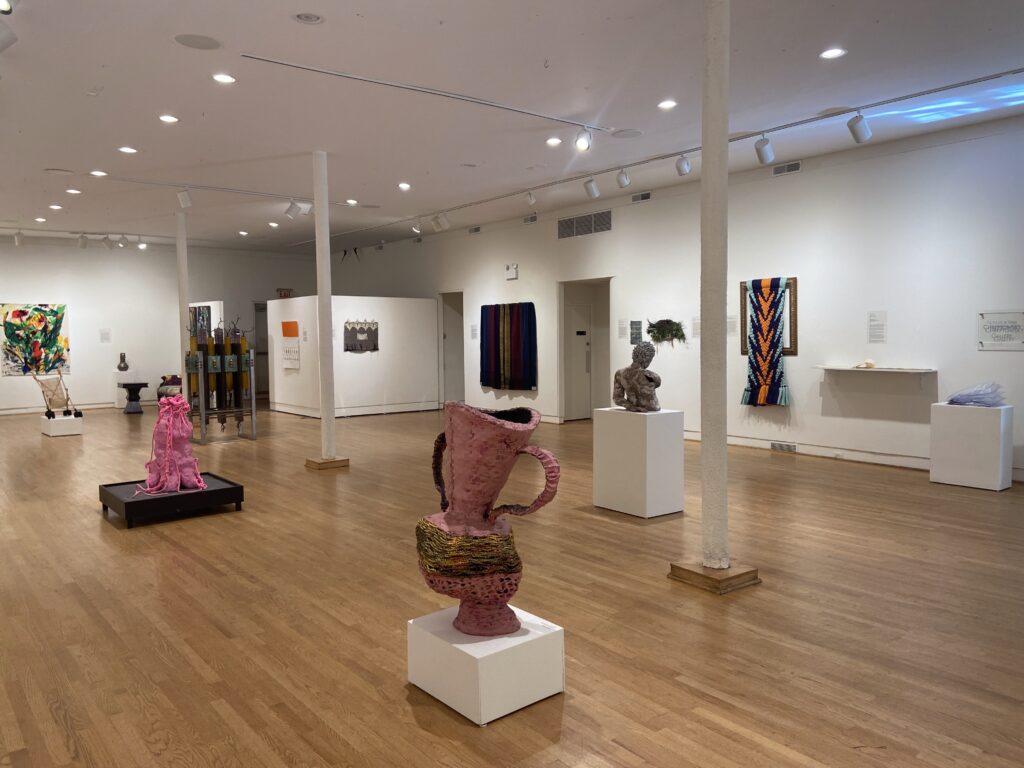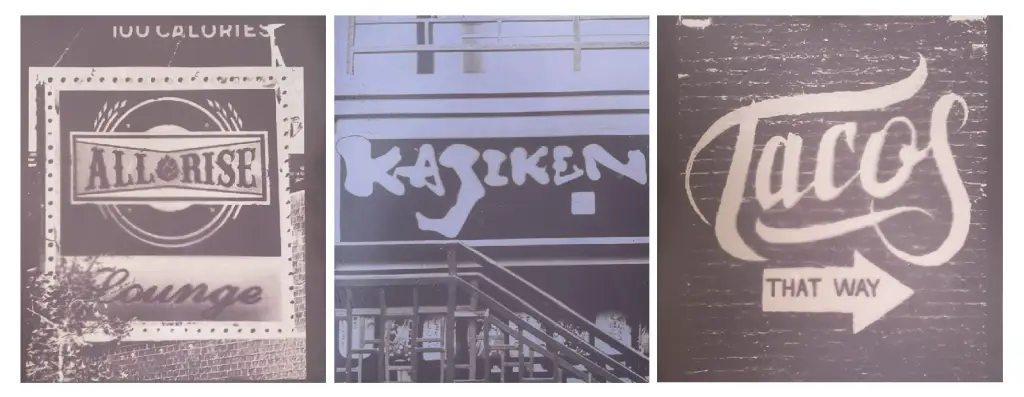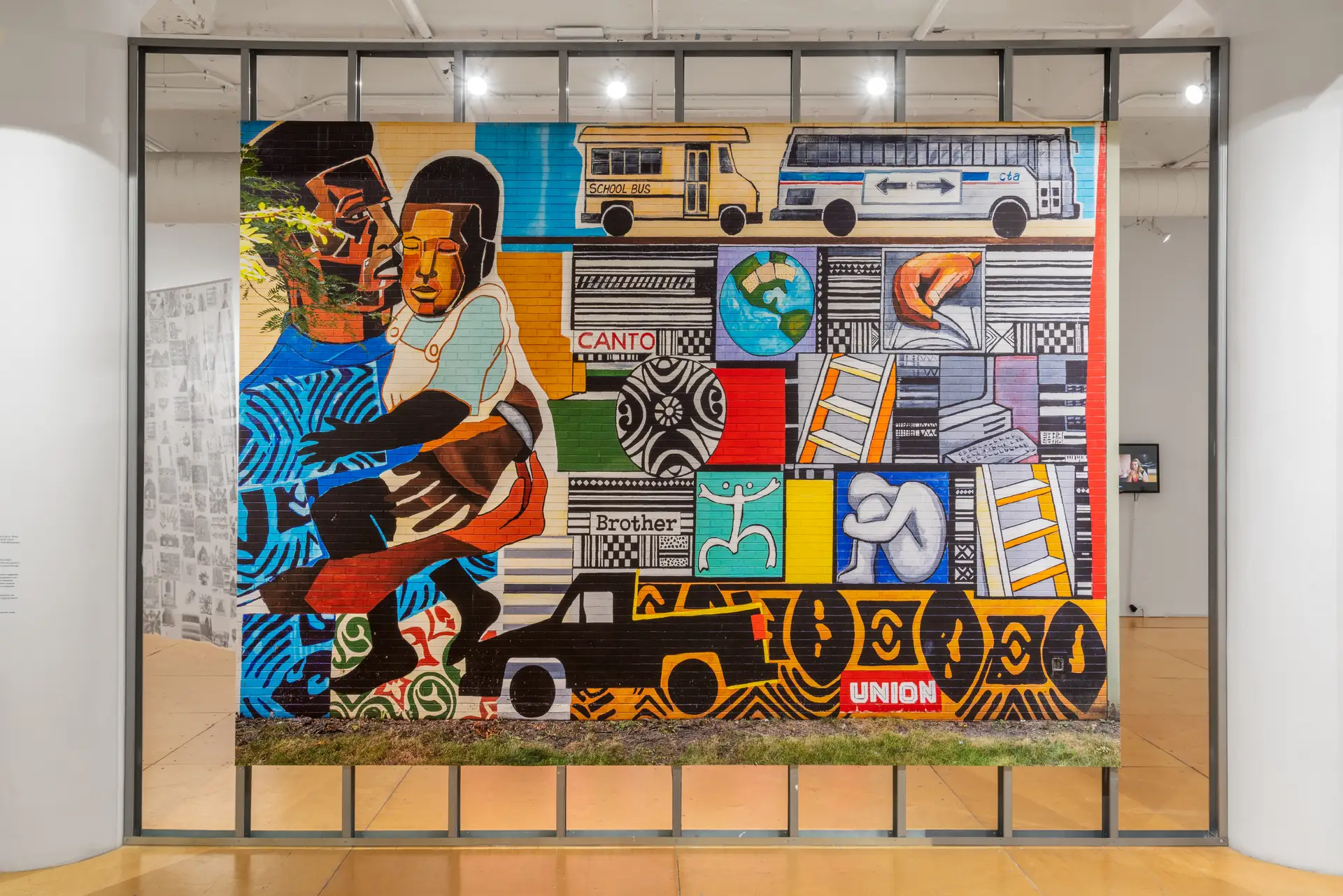On a seasonably frigid Saturday afternoon, I headed to the lakefront neighborhood of Edgewater to visit Myth of the Organic City, an art exhibition presented by 6018North. Its unique setting promised all the intrigue of a dilapidated mansion-turned-art space, where peeling walls and creaking floors seemed to echo the themes of decay and transformation explored in the exhibition.
Myth of the Organic City ambitiously traverses the history of urban development, starting from Indigenous land use to the establishment of post-industrial society. It inspires profound reflection on the constructed, man-made nature of our surroundings. Through a variety of installations, sculptures, and multimedia works, visitors encounter stunning themes of nature, industry, and society. Art becomes a medium for environmental critique, complementing traditional activism by engaging audiences and fostering new perspectives.
The exhibition takes as its entry point the Chicago seal, emblazoned with the words “Urbs In Horto” (City in a Garden), and pointedly questions this proclamation of climate consciousness. Can a city that produces structures of steel and concrete alongside legacies of racial segregation and environmental degradation truly embody this ideal?
“At every juncture—from the theft of land from Native Americans and acts of genocide, to paving streets with cement and asphalt, to ignoring overwhelming evidence of environmental harm—Chicago has consistently chosen not to embody the city in a garden it claims to be,” said Tricia Van Eck, Artistic Director and founder of 6018North.
This critical approach invites visitors to “reimagine the complicated relationship between the City and nature.” By presenting us with painstakingly constructed works of art, Myth of the Organic City underscores our existence as inhabitants of “artificial environments.” It covers the development of critical infrastructures, such as transportation systems and water supply, which were once considered cutting-edge technologies but have since become embroiled in routine use. “Such mature technological systems…reside in a naturalized background, as ordinary and unremarkable to us as trees, daylight, and dirt” (Edwards, 2003). However, Myth of the Organic City makes discoverable the intertwined relationship between nature, society, and technology. In doing so, it articulates the perspective of philosopher Bruno Latour and reinstates humans to their position in the natural world, rather than regarding them as separate entities with self-contained influence.
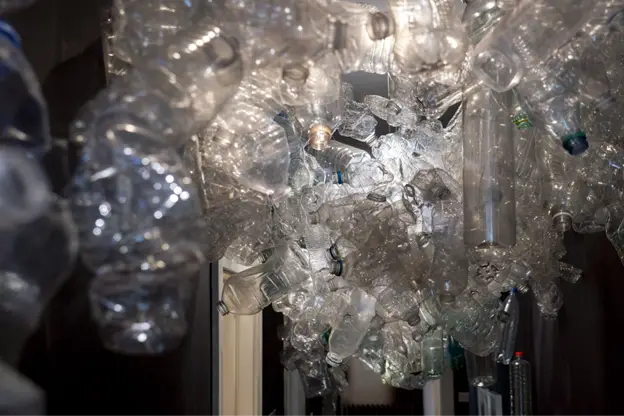
Tria Smith, Plastic Bottles Collection. Photo by Ji Yang.
In a striking installation by Tria Smith, Plastic Bottles Collection captures how “passive litter and waste threatens waterways in the Great Lakes.” Similarly, Persephone’s Portal (Smith and Katrin Schnabl) features an underworld of heat-extruded plastic and an upper world of organic material. In connecting “two distinct realms of materiality,” this work encourages consideration of the interplay between both natural and synthetic environments. The resonant quality of these pieces can inspire greater understanding of the ecological cost to human activity. The unseemly blend of litter and waste leaves an impression when considered in aggregate; it represents a voiding of the social contract which holds nature, technology and society separate. Confronted with negative externalities in such a tangible form, perhaps the fiction of endless extraction that does not exact commensurate costs has come to an end.
For instance, the fossil-fuel economy, integral to urbanization, relies on natural systems to process carbon emissions—an unsustainable demand that underscores the fallacy of separating human and natural realms. However, as Van Eck explains, environmentally harmful decisions are often undertaken to promote business interests. Prairie Death Mask (Giovanni Aloi and Jenny Kendler) reflects on this trade-off, when the City of Rockford’s municipal airport prioritized a new runway over preserving a rare prairie ecosystem. Framed as a necessity for economic growth, the decision ignored alternative proposals from local protesters that could have preserved the prairie while still meeting the city’s infrastructure needs. This example underscores the persistent tension between urban development and environmental preservation, illustrating the systemic flaws that drive these choices and the urgent need for balanced, forward-thinking city planning.
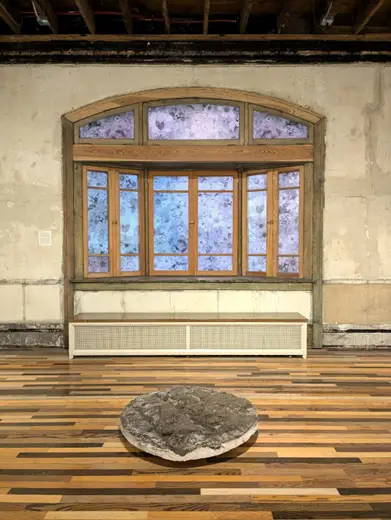
Jenny Kendler and Giovanni Aloi, Prairie Death Mask (Bell Bowl Prairie). Photo courtesy of 6018North.
In all, Myth of the Organic City uncovers how technological advancements have granted us the capacity to reshape nature as a resource to be extracted, processed, and consumed. This shift has led to a profound alteration in how we relate to the world around us—transforming nature into a product which must be manipulated to serve human interests. (Edwards, 2003)
The art installations featured in the exhibition poignantly reveal the ways in which this transformation manifests in our everyday surroundings, from the plastic waste that clogs waterways to the heat-extruded materials that blur the boundaries between synthetic and organic. These works of art compel us to confront the unseen impact of our technological footprint, making visible the tensions between nature, society, and industry. They destroy neat demarcations between domains and present the incontrovertible truth of an unreplenished and vanishing natural world.
Where infrastructure first served to subvert natural conditions, it has now become a site of reckoning for the climate crisis. A study by PLOS One, a peer-reviewed, open access journal published by the Public Library of Science, found that “one in four steel bridges in the US could collapse by 2050 due to extreme temperatures.” The disintegration of once-reliable infrastructure under the pressures of climate change forces us to contend with our previous disregard for environmental sustainability.
The naturalization of technology, coupled with our growing inability to critically discern its impact, poses significant risks to both our environment and society. I found myself thinking about the ingratiation of more recent consumer technologies and how they affirm the concept of Latour’s modernist settlement. As emerging technologies like artificial intelligence continue to evolve and become integrated into crucial sectors, we are increasingly unable to ascertain their impact, making it difficult to address the consequences of their proliferation. The process whereby technological systems become so entrenched that they are no longer questioned mimics the trajectory of older infrastructures like transportation and water systems, which were once considered cutting-edge but are now so commonplace that their environmental and social costs are overlooked.
The failure to critically engage with the complex relationship between society, technology, and nature results in a dangerous complacency, where the negative impacts of these systems remain invisible until they reach crisis proportions. Myth of the Organic City serves as a counter to this phenomenon, urging viewers to examine the often-overlooked intersections of urban development, environmental degradation, and technological expansion. To avoid further harm, we must cultivate a greater awareness of how these systems function and how they shape our world. Myth of the Organic City engages us in the mental exercise of identifying technical systems around us, as well as understanding their role in creating the current moment as we experience it.
Myth of the Organic City continues at 6018North through June 1, 2025.
ABOUT THE AUTHOR
